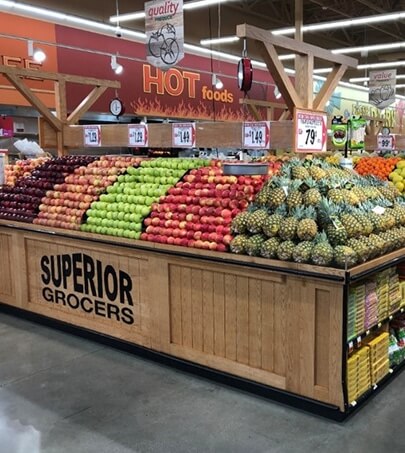With around 160,000 miles of railroad track across the U.S. and a flashing signal—complete with its very own meter—at each and every crossing, it’s no wonder that many railroads have a hard time keeping up with their energy bills. It’s not uncommon for the largest railroads to maintain more than 10,000 different utility accounts with as many as 70% tied to geographically dispersed signals and equipment. As staffing shortages continue to plague the industry, few operations have the internal bandwidth to process and pay all these bills on time, never mind the time or expertise to scour for opportunities to reduce the costs.
The problem is, this puts profits and sometimes even operations in jeopardy. Further, it is not a very sustainable approach to business. Railroads need to start prioritizing better utility bill and cost management practices in 2024 to keep their businesses on the best track forward. As energy costs continue to rise and sustainability takes on increasing importance, in the future, energy costs and efficiencies will continue to matter more and more to stakeholders of every type.
Here are the top five reasons for railroad operators to increase focus on energy spend today:
- Avoid costly late fees. The thousands of utility accounts needed to service railyards, signals, switches, and equipment across many different states create lots of opportunities for bills to slip through the cracks and go unpaid. Railroads get slapped with hefty late fees all the time. A big part of the problem—especially for rapidly growing railroads that are acquiring facilities, constructing new ones, or installing or updating equipment—lies in properly setting up or transitioning new or acquired utility accounts. Often the billing address is different from the physical location of the equipment or meters. Without available internal staff to pay careful attention to these details, the bills never even make it to the right place for processing. These mistakes are extremely common and can end up costing the typical railroad anywhere from 2% – 5% of their total utilities costs in late fees per year.
- Safeguard against shutoffs. Railroads are considered critical infrastructure and, technically, the power can’t be shut off for nonpayment. But utilities don’t always comply with this rule for a variety of reasons, and it’s typical for railroads to receive frequent disconnect notices. Railroads that miss payments month after month—often because the bills are never making it into their account payable systems—are risking the catastrophic consequences that could result from a loss of power.
- Ensure the most optimal tariff rate. The typical railroad spends hundreds of thousands of dollars per month on energy to keep its rail yards and equipment running 24/7. And most are paying significantly more than they should for the energy they use. For one thing, utility billing errors are extremely common, and most railroads are due refunds in the tens of thousands of dollars or more range. But few operations have the dedicated people to scrutinize thousands of utility bills per month to uncover these errors or to pursue refunds. The even bigger savings opportunity lies in rates and rate change opportunities. In regulated markets, it is not uncommon for a utility to offer as many as 50 or more different rate schedules and tariff rate options. Careful audits and reviews of current tariff rate assignments and tariff rules almost always turn up significant savings opportunities through options such as lower cost time-of-use rates. In these cases, the railroad doesn’t need to change anything about its operations or the energy it is consuming, it simply needs to identify and ask for the optimal rate.
For one of our railroad clients, we found nearly $600,000 in first year cost savings from rate changes and billing error corrections in one year alone and we found $868,000 in first year cost savings and refunds for another.
- Obtain lower costs in deregulated energy markets and protect against price spikes. In deregulated or open states (like Texas or Ohio), it is critical to proactively source and secure market competitive supply rates for electricity and natural gas not only to ensure lower overall utility costs, but also to eliminate the price volatility caused by extreme weather conditions. One only needs to consider the fallout from the 2021 Texas ice storms to understand the enormous consequences of supply constraints caused by unexpected weather events. Those not locked into fixed rates at that time saw their prices per kilowatt hour increase up to 100 times the normal rate, taking a huge toll on profitability for
- Be prepared for sustainability reporting requirements. Beyond saving money, there’s another critical reason that railroads need to focus on energy spend. More and more stakeholders including regulators and investors are demanding increasingly detailed emissions reporting including calculations for scope 1, 2, and 3 carbon emissions and detailed public disclosures including established emissions reduction targets. Meeting these expectations starts with in-depth knowledge of energy spending and detailed analysis of utility data.
Get ahead of the energy savings requests.
Whether the push to reduce energy costs comes from your CFO or the need to reduce greenhouse gas emissions comes from investors or state or local governments, it’s only a matter of time before railroads will need to demonstrate more proactive management of their energy usage and costs. It’s complex work that often requires daily oversight to know what the markets are doing, stay on top of the current rules, optimize rates, and keep up with the data and energy management work to be done. The utility experts at SIB are ready to help. If you want to make 2024 the year you give energy spending the attention it deserves and start preparing your business for a more sustainable, more profitable future, reach out to start the conversation today.
3. Contractual Errors
When a business enters into a service agreement with a power company, telecom provider or waste management facility, it is beholden to the terms of the contract. Unfortunately contracts with non-regulated power companies can contain errors and false information, resulting in inaccurate monthly charges and inconsistent rates. Or your company might be unintentionally paying a rate that’s well above market average without realizing it. Research average market rates to see how your expenses stack up.
A linen vendor was charging one of our clients for annual increases of almost 30% for years before we came in to review their expenses–even though their contract specified a cap of 8 percent! With some negotiation, SIB was able to get this contract back on track.
4. Utility Rate Errors
Power companies usually offer clients several different billing structures depending on their budget, operational requirements and size. Although some companies might use the same billing rate for decades, most businesses outgrow their initial billing structure. They are usually better served with a different plan.
One of the most egregious examples we caught was for a national big box retailer with an exceptionally high water bill at one location. As it turned out, they were being billed for the water used by the entire shopping center!
5. Late Fee Errors
Beware of unintended late fees! Utility companies with unusual billing cycles or delayed online payment systems might ding you monthly with an unforeseen late payment fee. Glance back at previous bills to see if there are frequent unexplained late payment fees. Then double check your payment history and billing cycle to discern the cause of those errors.
6. Overbilling Errors
For non-utility expenses such as laundry, cleaning or inventory supply services, watch out for accidental “upgrades.” If your restaurant only needs to pay for basic table linens, be sure you are not accidentally paying for luxury linens at twice the cost. This expense can sneak by unnoticed, damaging your bottom line.
Many businesses don’t realize that they qualify for certain tax exemptions. It’s common for businesses such as grocery stores—that are technically exempt from paying sales tax on supplies—to unwittingly pay sales tax on their inventory. Over time, these small tax payments add up and hurt your return on investments.
Similarly, when it comes to property tax reduction, businesses may also be missing out on potential exemptions. It’s essential to assess your property tax obligations carefully and explore opportunities for reducing this financial burden, ensuring you benefit from all available exemptions and incentives to optimize your overall tax strategy.
This happened to one of our clients who was charged sales tax, even though it is a credit union that is by definition exempt from those taxes.
How to Avoid Vendor Billing Errors?
To help protect your business, here are a few strategic practices that can significantly reduce the risk of overpaying for services or falling victim to inaccuracies.
Establish Internal Controls
Regular Audits of Bills and Contracts
Adopt Billing Management Software
An Invoice Audit Can Save Your Business Money
Instead of sifting through piles of paperwork and service policies on your own, hire a utility bill management expert to audit your overall expense and reduce costs. Utility auditors conduct a thorough review of all your monthly expenses from gas to electricity to internet and cell phones making utility bill auditing an essential process for identifying discrepancies and reducing costs. Research your billing history to identify discrepancies.
Invoice auditors find billing errors and provide effective solutions for your business. They conduct interviews with service companies and investigate market rates in order to discern whether or not your current payment structure aligns with industry norms.
Once an auditor finishes his investigation, he’ll provide your business with insights on how to reduce your monthly bills, eliminate false fees and charges and navigate future contracts.
SIB offers professional cost reduction services aimed at reducing your monthly bills. We analyze your company’s utility bills for an in-depth report on spending and offer creative savings solutions. We work with you and your vendors to ensure that you receiving excellent services at the best rates possible, usually without changing vendors.
Improve your bottom line by eliminating unnecessary expenses with a closer look at your usage and payment record.
Instead of sifting through piles of paperwork and service policies on your own, consider service providers with exeprtise in utility bill management, telecom expense management, or waste optimization to audit your overall expenses and reduce costs in these hard-to-manage spend categories.




